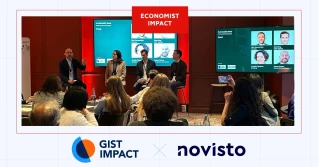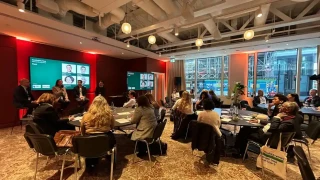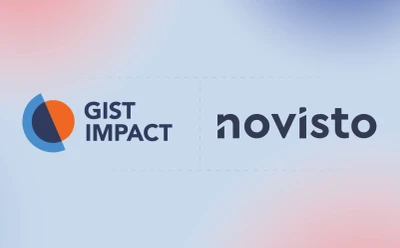
Last month in London, we co-hosted an exclusive CSRD “How-To” workshop with our partner GIST Impact at the Economist Impact Sustainability Week. The occasion brought together sustainability leaders, regulatory experts, and corporate decision-makers to discuss the evolving landscape of CSRD compliance.
With a powerhouse lineup of speakers and panelists, the session offered invaluable perspectives on double materiality assessments, audit readiness, and the strategic integration of sustainability into corporate governance.
Top 10 insights
#1 A structured framework to cut through the noise
The CSRD brings much-needed clarity to ESG reporting, offering a standardized approach that simplifies complexity and ensures consistency. By providing a clear roadmap, it helps organizations stay focused and aligned in an increasingly demanding disclosure landscape.
#2 Full steam ahead—despite Omnibus uncertainty
Despite questions around the Omnibus CSRD Proposal, companies are moving forward with disclosure and double materiality assessments, because the business case for transparency and accountability is undeniable.
#3 A more strategic approach to stakeholder engagement
The CSRD is more than a compliance exercise—it’s an opportunity to strengthen stakeholder engagement. Companies that use data-driven insights to shape their sustainability narratives can align efforts with business priorities and create more meaningful dialogue with investors, regulators, and the public.
#4 Start early, iterate often
The materiality assessment is an iterative process, one that allows businesses to refine their approach and adapt to evolving expectations. Companies that start early, take ownership, and leverage technology solutions to support the process gain a competitive advantage.

#5 Engage auditors from the start
Involving auditors and consultants from the outset helps prevent roadblocks later in the process. Transparency and reliable data are essential for aligning on material issues while keeping audit costs in check. To support this, companies are increasingly using digital tools and dedicated ESG software to enhance audit readiness and ensure a smoother assurance process.
#6 Think long-term
Materiality should be assessed with a forward-looking lens. Considering emerging risks and future shifts in the operating environment ensures that sustainability strategies remain resilient and relevant over time.
#7 A team effort, not a siloed task
Sustainability reporting should not fall solely on one department. Distributing responsibility across teams ensures a holistic approach, prevents overburdening sustainability leads, and captures diverse perspectives that enrich materiality assessments.
#8 Use data to tell a story—and build consensus
Data isn’t just for disclosures. When used effectively, it shapes meaningful stakeholder engagement, builds confidence in decision-making, and illustrates both risks and opportunities. What’s more, it’s a powerful way to bring facts to the table and build consensus across the organization.
#9 Leverage AI and digital tools for smarter implementation
AI and automation can streamline CSRD implementation, making data collection, interpretation, and reporting more efficient. Digital solutions like sustainability management software enhance insight-sharing across businesses, reducing the complexity of compliance.
#10 Beyond compliance, it’s a sustainability blueprint
The CSRD helps embed sustainability into corporate strategy. More than a checkbox exercise, it uncovers overlooked material areas, helps businesses engage stakeholders more meaningfully, and drives real business value.
Looking ahead
The workshop reinforced that while CSRD compliance presents challenges, it also offers businesses a unique opportunity to strengthen sustainability practices and enhance corporate resilience. Organizations that approach CSRD strategically—starting early, leveraging technology, and embedding sustainability across teams—will not only meet regulatory expectations but also gain a competitive edge.
For organizations looking to go further in their CSRD journey, Novisto can help support the next steps. Contact us today to get started.
